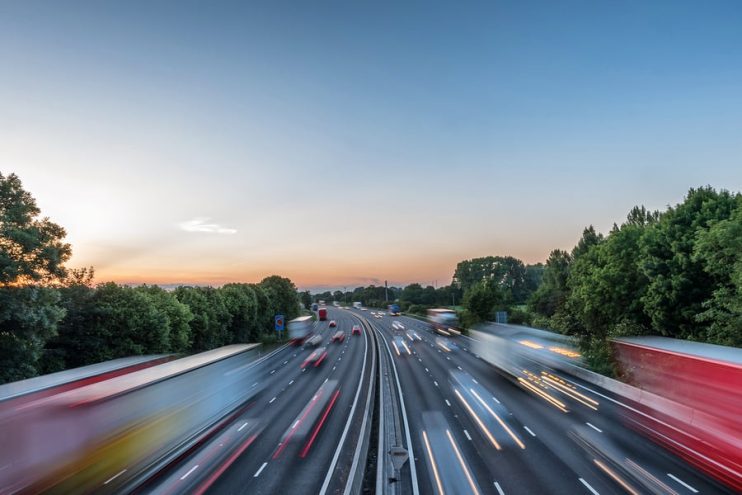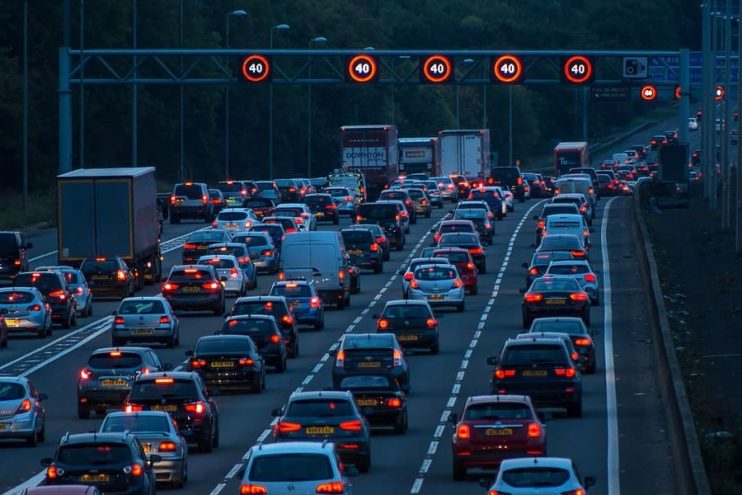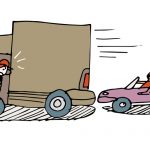
Getting out there on the motorway for the first time or even if it has been a while can be daunting. With the constant flow of traffic, it takes time to get used to the constant changing lanes and big trucks if you are only acclimatised to our single lane roads. However you can consult our guide for newbies to help you out.
As of June 4th 2018, in England, Scotland and Wales, learner drivers can now get used to the bigger roads with motorway lessons from an approved driving instructor. It’s a good thing too, helping more drivers understand safe use of the motorways.
Previously you could only undergo motorway training after passing your driving test, but now you can opt for voluntary lessons. Believe it or not but these are actually some of the safest roads in the whole of the UK.
Make sure you stay on the right side of the law and familiarise yourself with the Highway Code – so you understand the rules of the road. And use our guide to get prepared for your motorway journey.
Table of contents:
Motorway Mechanics
This section looks at the basic rules for motorways and how the design promotes safe and sensible usage.
How Lanes Work
There’s no such thing as a fast lane or a slow lane, the lanes on a motorway are called lane one, lane two and lane three. Here’s how you use them:
- Lane one – left hand lane – normal driving
- Lane two – middle lane – over-taking
- Lane three – right hand lane – over-taking
You should always try to drive in the left hand lane when the road ahead is unobstructed. If you are overtaking several fast moving vehicles do not undertake and always use the right hand lane to move past the traffic that is blocking your route before turning back into the left hand lane. Slow moving and speed restricted vehicles always remain in the left hand land, or can use the middle lane to overtake.
Guiding Lights
When you’re out on the road at night the colour of the studs are a useful guide that tell you about the road rules:
- Red – hard shoulder division
- Amber – central reservation division
- White – mid-lane division
- Green – slip road division
Motorway interchanges
These are where motorways join onto other roads or separate off into other routes. You will often need to change lanes, but keep an eye out for the overhead direction signs, which will keep you notified of all the information you need to continue on your journey.
Joining the motorway
When joining the motorway remember that even though it is courtesy for drivers to give you space, you are actually required to give way to existing traffic. Pull out into the left lane and stay there. Do not pull out straight into the middle or right lane.
Leaving the motorway
Be sure to get in the correct lane in plenty of time and indicate to give other drivers warning that you are departing from the motorway. Be sure to keep your speed up and only slow once you go through the gate to leave the motorway.
When other drivers join the motorway
When you are on the motorway you will often approach adjoining roads where other drivers are allowed to enter the motorway. Here follow these rules:
- Adjust your speed to allow other drivers to join the motorway
- Move out of the left hand lane if it is safe to do so, making it easier for joining traffic to merge
- Be aware drivers may join at speed and try to move straight into the middle or right lane
Overtaking
Always keep left unless overtaking and return to the left lane after overtaking. Remember to check your blind spot, cars can quickly approach the rear of your vehicle at speed particularly in the right hand lane and you do not want to pull out into one.
Undertaking
Although this is considered against etiquette it is not actually illegal to undertake, simply a non-accepted practice. You are permitted to undertake if the traffic in the other lane is moving slower.
Stopping on the motorway
You should only stop on a motorway if:
- Red lights or other signs and signals give you an immediate instruction
- You are informed to stop by an authority such as the police, highway agency traffic officers or vehicle and operator service agency officers
- It is an emergency
- It will prevent an accident
- Only stop on the hard shoulder in an emergency
Safe Motorway Driving
The speed limit for cars on the motorway is 70mph, but motorway speed limits are variable due to traffic conditions or roadways and the limits may change several times on a single stretch of road. Be observant and keep one eye out for signs and overhead warnings indicating changes in speed due to weather, congestion or accidents.

Variable speed limits are now commonplace on motorways like the M25 where they are used to ease traffic flow at busy times. Be sure to follow the required speed limits as many of these motorways are notorious for hidden speed cameras.
Although the maximum speed allowed is 70mph many drivers regularly exceed this limit. Given that some vehicles may be moving in excess of 90 mph it is vital you try to anticipate what is going on both ahead and behind your vehicle. Faster speeds require faster reaction times in an emergency.
Keep your distance
Always try to maintain a sensible distance between yourself and the vehicle in front. From a 2 second gap on a dry day to potentially more on a damp or wet road. The moment you see brake lights it’s time to ease off the accelerator. Remember that hard braking on a motorway can be dangerous, causing the vehicle behind to react suddenly and jam on the brakes, leading to congestion and collisions.
In wet weather extend the 2 second rule to a good 4 second rule and even if the car in front is going slower than you would like tail-gating is not allowed with an on the spot fine of £100 and 3 points on your license for this bullying behaviour.
Mirror, signal, manoeuvre
This is probably one of the first things you learned when behind the wheel. On motorways check your mirrors frequently because at higher speeds drivers can move more quickly than you are anticipating. Always ensure you are 100% confident before changing lanes and if in doubt, do not move.
Our Bonus Tips
- It can be helpful to make a note of the junction numbers and route when you’re planning ahead. Even though you’re probably using the satnav it still pays to have a good idea of where you’re going.
- Take a friend on the journey if you want that extra support or a family member who won’t distract you with unnecessary driving tips.
- Always rest well the night before a big break and there’s nothing wrong with taking a diversion off the motorway to take a break.
- Keep all the distractions out of sight, such as your phone, any gadgets as well as snacks and drinks.
- Accidents do happen on motorways. Don’t slow down other drivers by going slow and staring, also known as rubbernecking, as you go past.
- Take extra care when passing the bigger trucks and larger vehicles. Remember if you can’t see the driver, then the chances are that he probably hasn’t got a clear view of you.
- Always do your basic checks on your car, such as tyres, water and oil before you set out and stock up on fuel. The last thing you want is to summon a rescue crew because you ran out of petrol.
And Finally
We hope you haven’t been scared by this article as motorways are actually very safe roads as long as you follow the rules. And ignore the drivers who do things a little differently.
Skill and confidence come over time. Feeling nervous is completely natural, but if you don’t take the plunge then you won’t get the skills. Of course, you can always call up your instructor and get a few more lessons if you want that extra feeling of support. Everyone started once in the same place as you and experience will eventually get you there.













.png)
Pingback: The Best Five Cars for Towing – That You Can Buy Today for Under £5K - BreakerLink Blog
Pingback: Our 10 Most Annoying Driving Habits - BreakerLink Blog